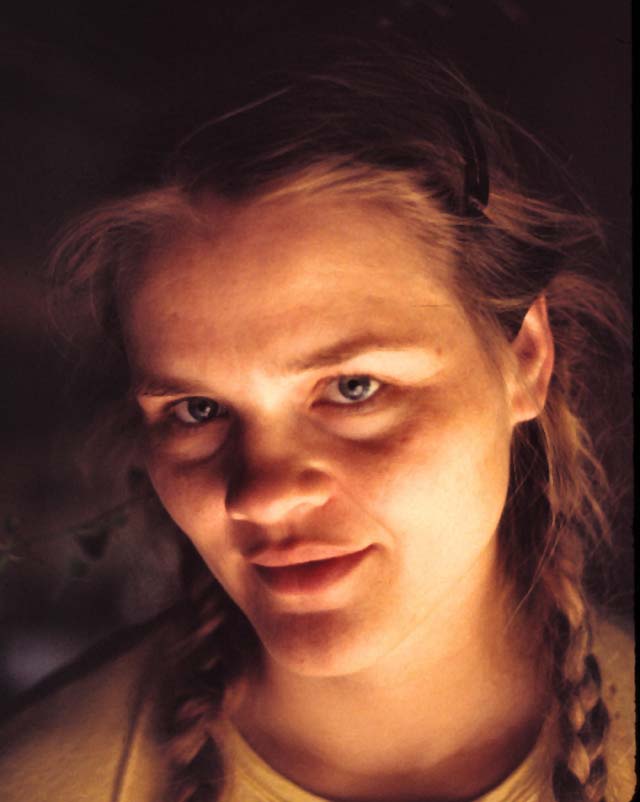But we knew it was Spring because the range land was speckled with the tiny forms of newborn Angus calves. They could be seen lying curled into a sleepy lump, or gingerly picking their way over the tangles of grass clumps, or vigorously pushing their hungry mouths against the udders of their grazing mothers. They were everywhere. Now and then, some Herefords with their bright white faces shone out among the black bovines, but as we drove along the winding highway that wanders back and forth across three states' boundaries, most often the little awkward legs belonged to infant Angus. Once, as I gazed at the fields of cattle, I saw one mother standing up next to her shiny wet calf whose umbilicus still dangled damply from from its belly.
Another sign of Spring was the freshly plowed furrows stretching in orderly rows that curved up and down following the contours of the western landscape. There is something so inviting to me about a plowed field. Maybe it's the potential. Maybe it's the optimism it represents. A new beginning, another chance to produce and flower and provide. It invokes something deep inside of me that is purely pleasurable. Perhaps, despite all the many, many winters I've spent away from the frozen climate of my childhood, the sight of a plowed field just provokes some deeply ingrained thrill that the frozen time is ended and my psyche cannot avoid that automatic response of joy.
I saw a couple of tractors pulling harrows over dormant looking fields. I used to do that. Our dad would use the manure spreader to distribute the piles that we'd cleaned from the sheds and the barn all winter. It would be scattered over the alfalfa fields and pastures when they were finally free from snow, but not yet greening and growing. Then a 10 or 11 year child could be sent out on a tractor pulling the harrow (a big rake-like implement) to cultivate the earth, digging in the dried manure bits, stirring up the packed dirt, nudging the grass and the hay to start paying attention to the sun and the warm air. It was an almost fool-proof job. You weren't going very fast, you were in a huge field with no obstacles to steer around, and all you had to do was drive up and down and up and down. A couple of times, I turned too sharply and ran the harrow up onto the big rear wheels, but it wasn't that hard to undo that mistake. Driving! All morning!
We arrived in our hometown and another indicator of the season was the small groups of deer hanging around in people's yards in the late afternoon. If you live anywhere near a canyon or a draw you can count on deer showing up to nibble on the bushes and greening grass around your house. We'd seen little groups of pronghorns all along the highway as we traveled through the open range land. They had the small horns of yearling males; the females were probably hiding with their fawns in the sheltered areas near a stream bed or in a small canyon. But the town deer are not so shy. They just amble down from the hills and hang around nibbling on the convenient landscaping around people's houses. For them, the choice is to eat the shrubs, or go hungry, because up in the mountains winter prevails.
Spring isn't a smooth event in the West. The day can start out cloudy and ominous and then blow into a blustery blue-sky day in a few hours. It can be 75 degrees one day and then 38 the next (or just a few hours later!) You can be raking your lawn and enjoying your grape hyacinth on Saturday afternoon only to wake up to four new inches of snow on Sunday. Don't like the weather? Wait an hour---it'll change. But the constants---newborn calves, plowed fields and budding trees---they will always be there, and those are the real harbingers of Spring. Winter finally gives up, and the calves grow, and the leaves come out, and pretty soon, you'll be irrigating those once-brown fields.
Fruit tree in my daughter's Utah yard.
Granddaughter learning the joys of cultivation.
Deer ambling away from my sister-in-law's shrubbery.





No comments:
Post a Comment